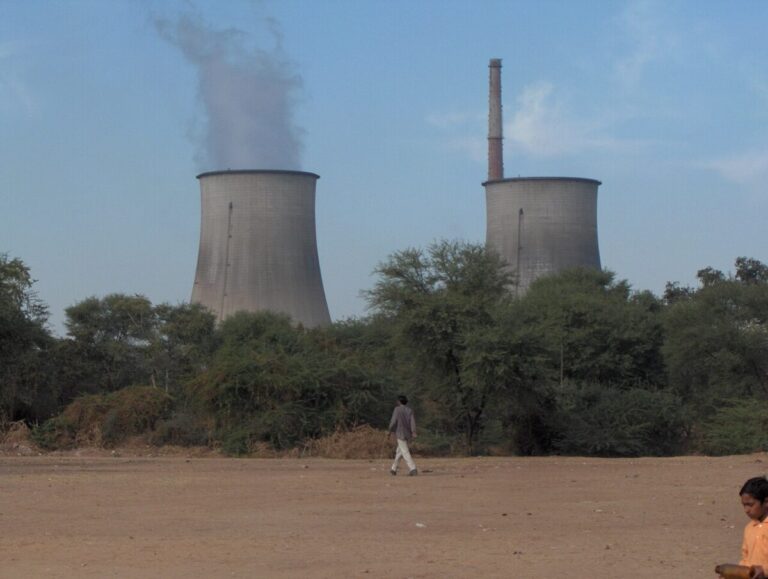India added a record 13,669 MW of power generation capacity during January-March this year, with renewable energy contributing 71.5%. The share of coal in total energy capacity, including lignite, fell below 50% for the first time since the 1960s.
This is well ahead of the Indian government’s target of achieving 50% cumulative energy generation capacity from non-fossil sources by 2030, according to the latest POWERup quarterly report from the Institute for Energy Economics and Financial Analysis (IEEFA).
The report states that the decline in coal shares reflects a global trend, with demand for coal in the Group of Seven leading industrialized countries set to reach record lows in 2023 – levels not seen since 1900. To accelerate the transition, the G7 countries pledged in April to implement the transition gradually. to phase out all coal-fired power generation by 2035, continuing their pledge to end the construction of new coal-fired power stations.
With 2024 set to be a pivotal year in the global transition away from fossil fuels, India is leading the way and taking major steps towards its goal of net-zero greenhouse gas emissions. Large-scale renewable energy projects are in the spotlight, as evidenced by tenders exceeding a record 69 GW, according to IEEFA.
Tenders for utility-scale renewable energy projects in the 2024 financial year easily exceeded the government target of 50 GW.
“After a slump between 2019 and 2022 due to supply chain issues and global price spikes due to the Covid-19 pandemic and Russia’s invasion of Ukraine, the market has recovered and gone from strength to strength,” the author said. report. Vibhuti Garg, South Asia Director for IEEFA. “There is strong investor interest in the Indian utility-scale renewable energy market. The main reasons are the large-scale potential for market growth, support from the central government in terms of targets and regulatory frameworks, and higher operating margins.”
According to Ember’s fifth annual Global Electricity Review of 80 countries, released last week, India has risen to third in the solar power generation rankings, behind only China and the United States. Ranked ninth in 2015, India has now surpassed Japan, which, along with fellow G7 member Germany, has stubbornly high demand for coal.
Solar energy was the fastest growing electricity source in the world for the 19th year in a row, adding more than twice as much new electricity as coal last year. India had the fourth largest increase in solar power generation in the world in 2023 (18 TWh), after China (156 TWh), the United States (33 TWh) and Brazil (22 TWh). The four largest countries will account for three-quarters of the solar energy sector’s growth by 2023.
Since 2000, the share of global electricity from renewable energy sources has grown from 19% to over 30%, driven by an increase in solar and wind energy from 0.2% in 2000 to a record 13.4% in 2023. As a result of these, the carbon dioxide intensity of global energy generation reached a record low in 2023, 12% below the 2007 peak.
“A future powered by renewables is now becoming a reality,” said Aditya Lolla, Ember’s Asia Program Director. “Solar energy in particular is growing at an unprecedented pace. Our report concludes that the rapid growth of solar and wind energy has brought the world to a crucial turning point – likely this year – where fossil production begins to decline globally.”
India generated 5.8% of its electricity from solar energy in 2023, in line with the global average, which was 5.5% in 2023.
“Adverse weather conditions and rising energy demand mean the country remains dependent on coal for more than 70% of its electricity generation,” the report said. “The situation is unlikely to change this year as the Central Electricity Authority expects a shortage of hydropower, which will lead to power shortages, especially at night when solar energy is offline. As a result, the country can restart idled coal-fired power stations to make up for the shortage.”
On a more positive note, India’s push for renewable energy has attracted a host of new players at the state, national and international levels. Of the record 69 GW of tenders awarded in the 2024 financial year, only a quarter came from the Solar Energy Corp. of India (SECI), highlighting the important role that state-level governments will play in the country’s utility-scale renewable energy landscape.
India installed a record solar capacity of 8.5 GW in the first quarter of this year, thanks to many projects coming online, including Adani’s 1.6 GW solar project in Khavda, Gujarat.
“The record solar installations were driven by a sustained annual increase in capacity offered and the urgency in commissioning projects ahead of the start of the Approved List of Models and Manufacturers (ALMM) policy from April 1, 2024,” it said. Charith Konda, energy specialist at IEEFA.
The future looks bright for India’s renewable energy sector as innovative procurement formats emerge to meet market needs. There has been an increase in tenders for energy storage system (ESS) projects, which will form a crucial part of India’s renewable energy infrastructure.
“Power producers’ preference for a less intermittent and improved profile of renewable energy production has increased significantly,” said Jyoti Gulia, founder of JMK Research. “Since the introduction of hybrid tenders in 2018, there has been a strong shift in momentum in renewable energy tendering from solar and wind energy to hybrid and renewable energy plus ESS. The emphasis on the quality of output power will become increasingly stronger in the coming years.”
The procurement activities in FY 2024 confirm that the future is bright for India’s renewable energy sector, with market participants confident that annual procurement capacity will once again exceed the national target of 50 GW in FY 2025.
This content is copyrighted and may not be reused. If you would like to collaborate with us and reuse some of our content, please contact: editors@pv-magazine.com.


